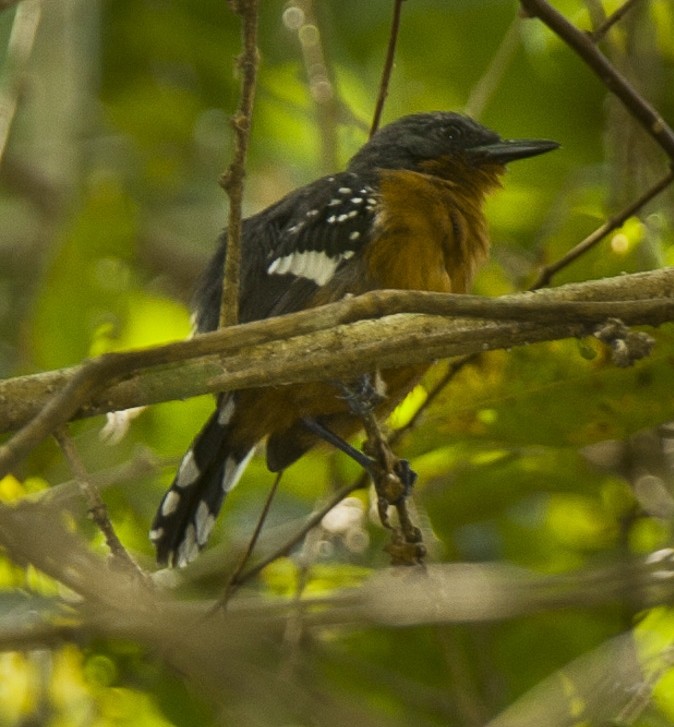Dot-winged Antwren
A species of Dot-winged Antwren Scientific name : Microrhopias quixensis Genus : Dot-winged Antwren
Dot-winged Antwren, A species of Dot-winged Antwren
Botanical name: Microrhopias quixensis
Genus: Dot-winged Antwren
Content
Description General Info
 Photo By Francesco Veronesi , used under CC-BY-SA-2.0 /Cropped and compressed from original
Photo By Francesco Veronesi , used under CC-BY-SA-2.0 /Cropped and compressed from original Description
The dot-winged antwren (Microrhopias quixensis) is a passerine bird in the antbird family. In the past it was sometimes known as the velvety antwren, and some of its more distinctive subspecies have their own infrequently used English names. It is a resident in tropical Central and South America from southeastern Mexico south to western Ecuador, northern Bolivia, central Brazil and the Guianas. It is the only member of the genus Microrhopias. This is a common bird of the understory of wet forest, especially at edges and clearings, tall second growth, and in cacao plantations. The female lays two brown-spotted white eggs which are incubated by both sexes, in a small, deep, plant fibre and dead leaf cup nest 1–12 m high in a tree on a thin twig in thick foliage. The male and female parents both feed the chicks. The dot-winged antwren is a warbler-like bird, typically 11 cm long, and weighing 8.5 g. The adult male is mainly velvety black, with a broad white wing bar and white spots on the wing coverts. The female shares the male's wing pattern, but has dark slate upperparts and rufous underparts. There are significant variations in the plumage depending on the exact subspecies; in the male this mainly involves the amount of white in the wings and tail, and this is reflected in the female. However, in the female the subspecies also differ in the darkness of the upperparts (bicolor of the south-central Amazon is relatively pale grey above), and the amount of rufous below (quixensis of the northwestern Amazon has a black throat, nigriventris found along the east Andean slope in Peru has a black belly and chin, and emiliae of the southeastern Amazon has black underparts except for the rufous chest). Young birds are sooty-brown above, shading to dull cinnamon below. The underpart colouration is more extensive and more rufous in young females. This species has a whistled peep call, and the song is an ascending whistle and trill, chee chee chee-che-che-chr,r,r,r, but with some geographical variations. The dot-winged antwren is found as pairs or family groups, and sometimes with other antwrens as part of a mixed-species feeding flock It feeds on small insects and other arthropods taken from twigs and foliage in the thickets or vine tangles. It is often seen foraging in more exposed positions than its relatives. The genus Microrhopias was erected by the English zoologist Philip Sclater in 1862. 
Size
12 cm
Nest Placement
Ground
Feeding Habits
Dot-winged Antwren primarily consumes insects, including orthopterans, hemipterans, and beetles, as well as larval and adult lepidopterans and spiders. It forages by gleaning prey from foliage and excels with unique hunting techniques.
Habitat
The dot-winged Antwren is typically found in humid lowland and foothill evergreen forest peripheries, thriving in areas with dense understory vegetation like vine tangles up to elevations of 1100 m. It utilizes forest gaps, second-growth woodlands, and semi-deciduous forests with viny thickets. Occasionally, it associates with bamboo, várzea forests, and shaded regenerating plantations.
Dite type
Insectivorous
General Info
Feeding Habits
Bird food type
Species Status
Not globally threatened.
Scientific Classification
Phylum
Chordates Class
Birds Order
Perching birds Family
Antbirds Genus
Dot-winged Antwren Species
Dot-winged Antwren